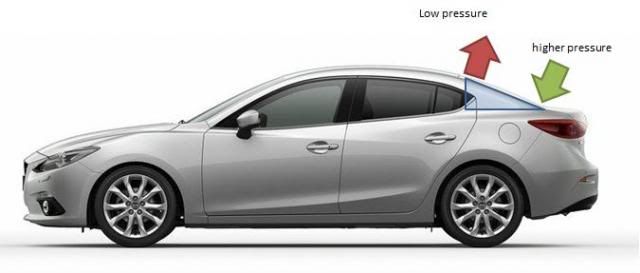Why does the sedan get a better Cd?
if we look at a contemporary model, say the 2014 mazda 3.
Cd: 0.275 for hatch, 0.255 for sedan.
I would argue that from the B pillar forward the cars are identical. with the same cross section. So where does the difference come from?


A few ideas i'm toying with. with the sedan, quicker plan taper in the green house area allowing more air to fill in the wake, reducing pressure drag.
the other idea relates to the rear window and the reflex camber curve of the truck. As i see it, the air from the roof accelerates over the rear glass because it slopes faster than the ideal AST. I assume it stays attached because the transition is smooth and the angle is less than 22 degrees (22 deg triangle shown as reference) but a low pressure zone is created with a horizontal component leading to more drag(red arrow). But when the air turns the other direction at the trunk and slows down a high pressure area is created. Does the high pressure area cancel out the low? is the net effect less pressure drag than by just following the AST (as the hatchback does)? Is there anything else i can be taught about this situation.

on an aside. I've noticed many many contemporary 3 box vehicles all seem to have 22degree rear windows. are they all using the same effect?